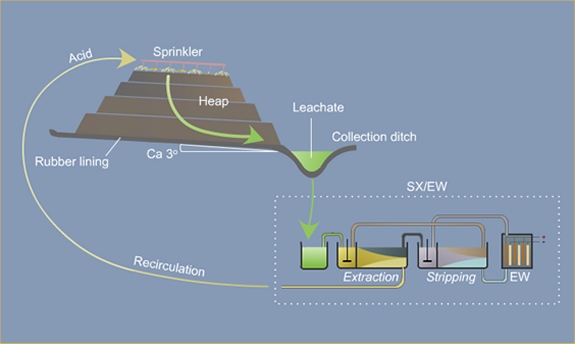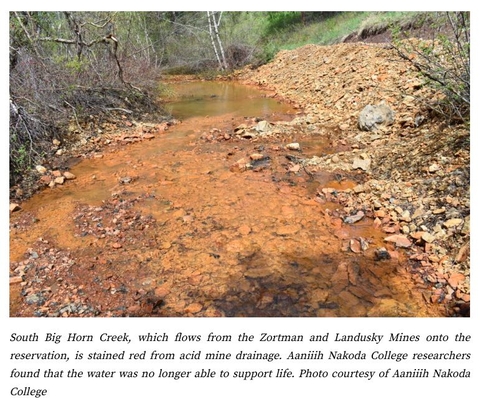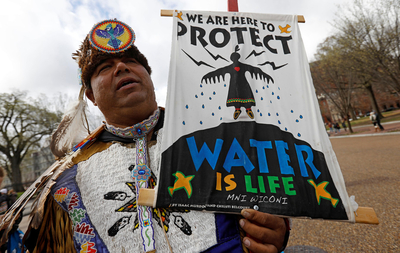The Timeline of Events and Outcomes
History of Mining and Protection in the Little Rocky Mountains: A Timeline of Events
View the timeline in more detail here.
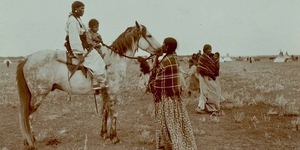
May 10, 1872
General Mining Act of 1872 signed into law by President Ulysses S. Grant.
May 10, 1872
The General Mining Act of 1872 is a United States federal law that authorizes and governs prospecting and mining for economic minerals, such as gold, platinum, and silver, on federal public lands. This law, approved on May 10, 1872, codified the informal system of acquiring and protecting mining claims on public land, formed by prospectors in California and Nevada from the late 1840s through the 1860s, such as during the California Gold Rush. [Wikipedia]
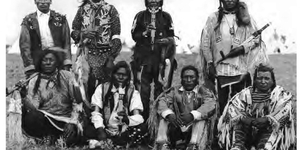
June 1, 1888
Fort Belknap Indian Reservation established for the Gros Ventre and Assiniboine tribes.
June 1, 1888
Fort Belknap Indian Reservation was created by an Act of Congress on May 1, 1888 and the Fort Belknap Agency was established at its present location, four miles southeast of the present township of Harlem, Montana. [Fort Belknap Indian Community]
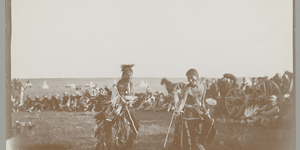
October 9, 1895
A federal commission led by George Bird Grinnell signs an agreement with the Fort Belknap Indian Community purchasing a 49 square-mile tract of line that encompassed the Little Rocky Mountains.
October 9, 1895
A federal commission led by George Bird Grinnell signs an agreement with the Fort Belknap Indian Community purchasing a 49 square-mile tract of line that encompassed the Little Rocky Mountains. During negotiations for the treaty, Grinnell and other members of the commission told Fort Belknap Indians that they would not receive rations if they did not sign the agreement. Within months of the agreement being signed and received by Congress, mining prospectors flooded the Little Rockies and rapidly built the mining districts of Zortman and Landusky.
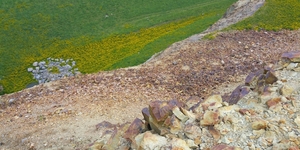
June 1979
The Montana Department of State Lands approves applications filed by Zortman Mining, Inc. (ZMI), a wholly-owned subsidiary of Pegasus Gold Corporation, for operating permits for two open-pit cyanide heap leach mines in the Little Rocky Mountains.
June 1979
1979 Pegasus Gold Corp. and its subsidiary, Zortman Mining Inc. (ZMI), build two connected cyanide heap-leach mines named after the original prospectors, Zortman and Landusky. The companies promise not to mine sulfide ore, which creates a lethal brew called acid mine drainage when exposed to air and water. [The rise and fall of a gold mining company, High Country News]
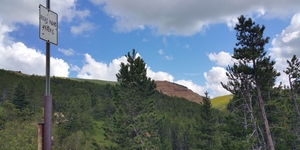
June 15, 1990
After at least three spills at the Zortman and Landusky mines in the previous year, the Fort Belknap Community Council Tribal Health Department issues a notice to Fort Belknap residents indicating that water from streams leading from the Little Rockies may not be safe for consumption and outlining alternative water sources and methods of water monitoring and treatment.
June 15, 1990
Before opening, mine owner Pegasus Gold hired a spokesman to assure the public that the company would run an efficient and non-polluting business. Pegasus also promised 70 jobs and a $2 million annual payroll. State regulators were so impressed they did not require extensive environmental studies, Trout Unlimited’s Farling said.
Within three years of cranking up, however, pollution had leaked from the property. By 1993, selenium, a metal associated with mine waste, began to show up in German Gulch, where an almost pure strain of native cutthroat trout lives. [Toxic legacy haunts Montana; What can SC learn?, The State]
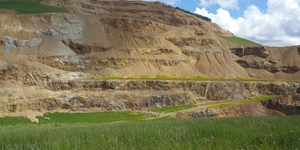
June 22, 1990
The Lewistown District Office of the Bureau of Land Management (BLM) approves an application for an amendment to the operating permit of the Landusky mine.
June 22, 1990
Soon after, Red Thunder Incorporated, along with a similar organization called Island Mountain Protectors and the Fort Belknap Community Council, appeal this decision to the Interior Board of Land Appeals (IBLA). Their appeal was denied on December 19, 1990.

August 22, 1991
August 22-25, 1991: American Indian Traditional Environmental Conference held by Red Thunder at the Chief Nosey Recreation Center in Lodgepole.
August 22, 1991
August 22-25, 1991: American Indian Traditional Environmental Conference held by Red Thunder at the Chief Nosey Recreation Center in Lodgepole; supporters from as far away as Ontario, New York, and Texas participate in the conference.
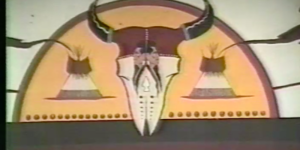
March 15, 1992
The premiere screening of Indian Tears of Love is held at Hotel Boulderado in Boulder, Colorado.
March 15, 1992
During the early 1990s, a handful of Native American activists founded a grassroots, reservation-based environmental organization known as Red Thunder, Inc., a non-profit organization. The purpose of Red Thunder was to fight for the sacred Little Rocky Mountains on the south end of the Fort Belknap Indian reservation, and preserve the natural environment.
Red Thunder and it's allies also made some documentaries to help educate the public and solicit support for their cause. One was “Indian Tears of Love.”
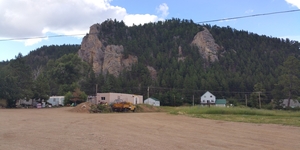
May 1992
ZMI submits another application for an amendment to the operating permit of the Landusky mine to the BLM and the Montana Department of State Lands.
May 1992
This amendment proposed to more than triple the amount of disturbed land at the mine sites.
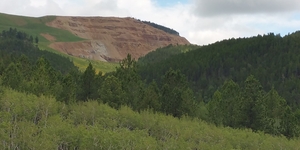
Late 1992
Acid rock drainage is detected in water monitoring reports sent to the Montana Department of State Lands by Pegasus.
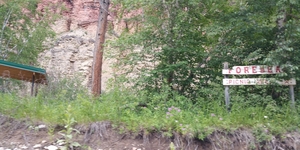
June 1993
Red Thunder and Island Mountain Protectors send a notice to Pegasus of their intention to file a clean-water suit against them.
June 1993
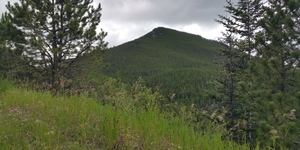
July 1993
A heavy rainstorm leads drainages at the Zortman mine to overflow and send thousands of gallons of orange, acidic sludge through the streets of Zortman.
July 1993

July 28, 1993
The Environmental Protection Agency (EPA) sent a notice to the Montana Department of Health and Environmental Sciences (DHES) that the Zortman and Landusky mines had violated the federal Clean Water Act.
July 28, 1993
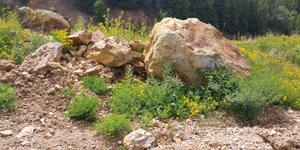
August 24, 1993
The DHES files a clean-water suit against Pegasus and ZMI for violations of the Montana Water Quality Act first in the Phillips County District Court, and then in the First District Court of Montana in Helena.
August 24, 1993
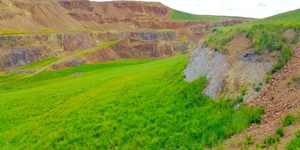
June 1995
The EPA filed a complaint against Pegasus Gold Corporation and Zortman Mining Inc. for violations of the federal Clean Water Act in June 1995 that sought civil penalties and permanent injunctive relief.
June 1995
The State of Montana filed a supplemental complaint soon after. The Fort Belknap Community Council, the Assiniboine Tribe, and the Gros Ventre Tribe filed a complaint in a District Court for various violations of environmental legislation. These two complaints would eventually be consolidated.
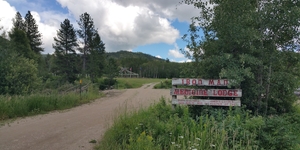
March 1996
The BLM and Montana Department of Environmental Quality (DEQ; created on July 1995 as a consolidation of other state agencies involved in environmental regulation, such as the Department of State Lands and the Department of Health and Environmental Sciences) release an environmental impact statement for the expansion project that permitted expansion with various conditions.
March 1996

July 1996
A Consent Decree between Pegasus, the EPA, the Montana DEQ, the Fort Belknap Community Council, the Gros Ventre Tribe, and the Assiniboine Tribe is signed under the auspices of the Department of Justice.
July 1996
The decree outlined $37 million in civil penalties; monitoring, mitigation, and reclamation procedures for ongoing mining; and other forms of redress for the parties damaged by the Pegasus mines. Notably, the settlement was reached so that Pegasus could continue mining in the Little Rockies, just in allegedly safer ways.

June 1997
The IBLA halts the expansion of the Zortman and Landusky mines as it reviewed an appeal of the BLM’s decision to proceed with the project following their environmental impact statement and the consent decree.
June 1997
The appeal was filed by the Fort Belknap Community Council, the Gros Ventre Tribe, the Assiniboine Tribe, Island Mountain Protectors, and the National Wildlife Federation.
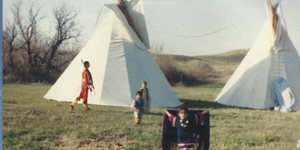
December 1997
Pegasus stock falls to under one dollar per share.
December 1997
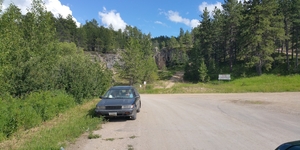
January 16, 1998
Pegasus files for chapter 11 bankruptcy in a Nevada court.
January 16, 1998
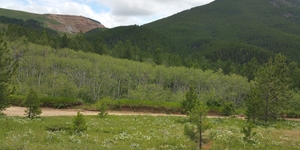
December 1998
Pegasus reorganizes under the name of Apollo Gold.
December 1998
Pegasus reorganizes under the name of Apollo Gold. Apollo Gold liquidated thirteen of sixteen Pegasus subsidiaries, including ZMI, abandoning the Zortman and Landusky mines and leaving surface reclamation and water treatment completely to state and federal agencies.
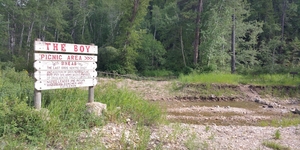
January 2017
Reclamation in the Little Rocky Mountains is ongoing.
2017
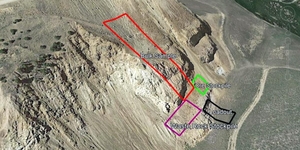
March 2021
DEQ approves plan to excavate old Zortman gold mine.
March 2021
Despite the damage mining has caused to the Little Rockies and without input from the local tribes who'll be impacted, a Bozeman-based company’s application for an exploration license to remove 1,000 tons of rock from an inactive gold mine near Zortman has been approved by the Montana Department of Environmental Quality. [Read more about it here.]





